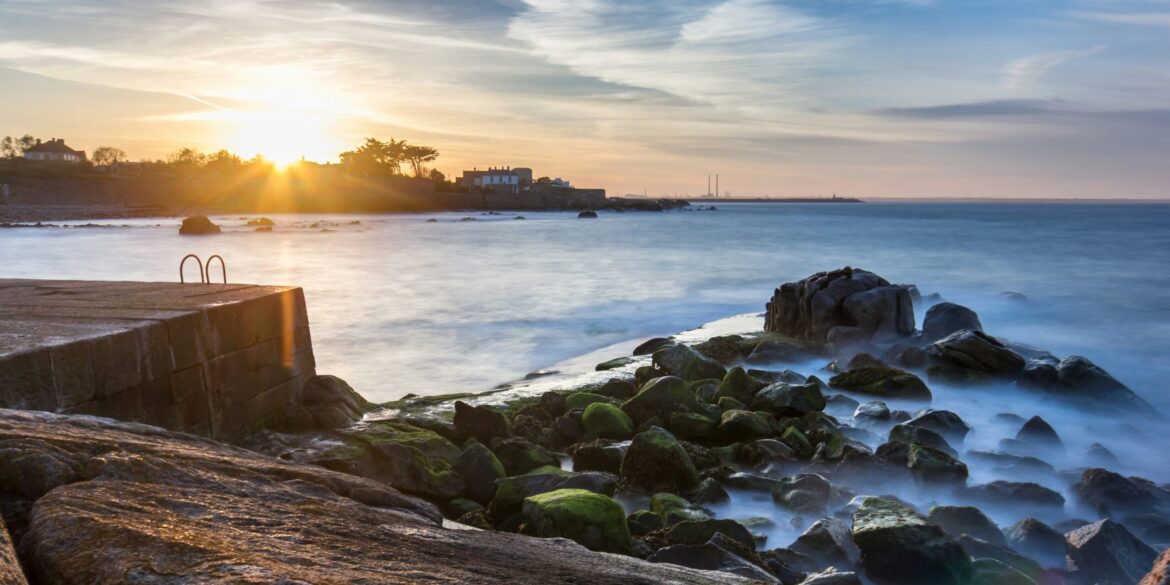On July 24, 2025, The Guardian spotlighted Boston as a national innovator in urban climate adaptation, following a year of increasing flood impacts and sea-level rise across the city’s waterfront. The story emphasized how Boston is translating plans into action through structural reforms, extensive shoreline projects, and nature-based resilience strategies.
Boston experienced 19 flood days in 2024, a stark indicator of escalating climate vulnerability. In response, Mayor Michelle Wu’s administration established the nation’s first Office of Climate Resilience in August 2024. This new office coordinates climate-focused work across all city departments, ensuring that adaptation efforts progress effectively from planning to construction.
A notable policy advancement involved updating building codes citywide to integrate future flood risk projections. These reforms aim to ensure new developments and major renovations account for projected sea-level rise, storm surge, and land subsidence in long-term planning.
Central to Boston’s strategy is the planning and implementation of over 100 coastal resilience projects along its 47‑mile shoreline. Spread across five neighborhoods—Charlestown, Dorchester, Downtown/North End, East Boston, and South Boston—these initiatives include reimagined waterfront promenades, elevated public parks, flood barriers disguised as landscape, and restored wetlands. The effort follows the groundwork laid by detailed Coastal Resilience Solutions Plans completed between 2017 and 2022.
The Piers Park expansion, completed in 2023, exemplifies this approach: the new park is elevated above flood levels and functions as both a recreational area and a protective seawall. Councilmember Gabriela Coletta Zapata, representing East Boston, highlighted the urgency, noting that residents living directly on the waterfront could face displacement without swift action.
Another hallmark initiative is natural infrastructure, developed in partnership with groups such as the Stone Living Lab, Boston Harbor Now, and local universities. Wetland restoration projects along the harbor serve as buffers against storm surges while enhancing biodiversity, carbon sequestration, and water quality. Leaders emphasize that nature-based solutions often perform better during extreme weather than rigid “grey” infrastructure alone.
Despite setbacks from federal funding cuts under former administrations, Boston has forged ahead by leveraging its own resources. A $75 million city-wide climate resilience reserve, combined with state grants, FEMA BRIC applications, and private sector contributions, has empowered the city to advance critical projects without delay.
Complementing physical infrastructure, Boston is pursuing financial innovation. In March 2025, the Boston City Council advanced proposals to establish a municipal climate bank, designed to pool public and private dollars to finance resilience investments in neighborhoods most at risk. Alongside this, an Anti-Displacement Action Plan aims to protect historically underserved communities from being priced out as resilience upgrades attract development.
Boston’s climate resilience vision builds on its earlier Climate Ready Boston initiative, first launched in 2016 to address sea-level rise, storm flooding, and extreme heat. By fall 2025, the city will release its updated 2030 Climate Action Plan, laying out measurable goals for both emissions reduction and climate adaptation aligned with Boston’s Green New Deal framework.
Dr. Brian Swett, Boston’s Chief Climate Officer, serves as a key voice in this transformation. The Guardian quotes Swett asserting the need for a dedicated office to ensure climate resilience infrastructure actually gets built. “We needed an office solely focused on delivering climate resilience infrastructure,” he said, underscoring the shift from planning to execution.
These efforts are not solely a technical undertaking but a moral and economic imperative. As sea levels are projected to rise significantly—Boston has seen nearly 10 inches of increase since the mid-20th century, with projections pointing to further expansion by the 2030s—the cost of inaction threatens critical infrastructure and neighborhoods. The city’s proactive approach positions resilience as both protective and prosperity-enhancing.
Yet Boston is not without challenges. Recent research cautions against “green gentrification,” where environmental improvements can inadvertently drive displacement by making neighborhoods more desirable and expensive. Observers urge integration of housing protections and anti-displacement policy alongside resilience upgrades to ensure benefits reach all residents.
Boston’s model offers a scalable and equitable blueprint for other coastal cities. Integrating comprehensive planning, institutional coordination, infrastructure investment, and nature-based design, the city demonstrates how adaptation and justice can be woven into urban revitalization.
As Boston prepares its 2030 Climate Action Plan and launches next phases of shoreline work, its resilience journey highlights the potential of cities to lead climate solutions—even when federal support falls short. In reshaping its waterfront and governance structures, Boston stands as a living example of climate adaptation shaped by equity, innovation, and urgency.

